本文基于Windos系统上Go SDK v1.8进行讲解
1.sort包介绍
sort 包主要用来实现排序相关的操作,它实现了四种基本的排序算法:插入排序(insertionSort)、归并排序(symMerge)、堆排序(heapSort)和快速排序(quickSort);sort 包会依据实际数据自动选择最优的排序算法会对原值进行改变
注:需要写import “sort”

2.sort.Interface接口
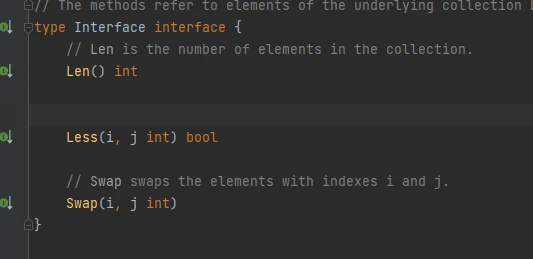

3.sort.IntSlice切片类型
3.1IntSlice切片类型
IntSlice也是Interface接口,原因是它实现了那三个方法

3.2Len、Less、Swap、Sort方法

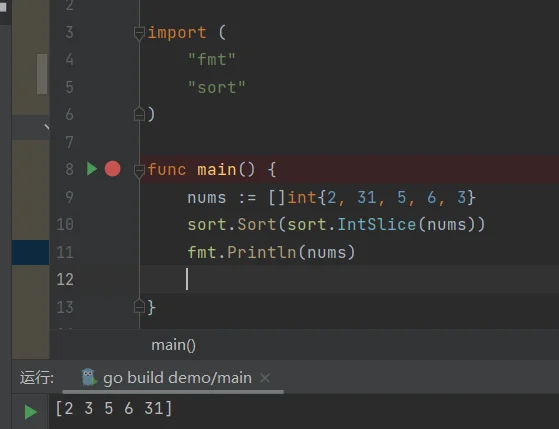
3.3Search方法
Search等价于调用SearchInts(p, x)
func (p IntSlice) Search(x int) int
4.sort.Float64Slice切片类型
4.1Float64Slice类型
Float64Slice也是Interface接口,原因是它实现了那三个方法
// Float64Slice implements Interface for a []float64, sorting in increasing order,
// with not-a-number (NaN) values ordered before other values.
type Float64Slice []float64
4.2Len、Less、Swap、Sort方法
func (x Float64Slice) Len() int { return len(x) }
// Less reports whether x[i] should be ordered before x[j], as required by the sort Interface.
// Note that floating-point comparison by itself is not a transitive relation: it does not
// report a consistent ordering for not-a-number (NaN) values.
// This implementation of Less places NaN values before any others, by using:
//
// x[i] < x[j] || (math.IsNaN(x[i]) && !math.IsNaN(x[j]))
//
func (x Float64Slice) Less(i, j int) bool { return x[i] < x[j] || (isNaN(x[i]) && !isNaN(x[j])) }
func (x Float64Slice) Swap(i, j int) { x[i], x[j] = x[j], x[i] }
// Sort is a convenience method: x.Sort() calls Sort(x).
func (x Float64Slice) Sort() { Sort(x) }
4.3Search方法
Search等价于调用SearchFloat64s(p, x)
func (p Float64Slice) Search(x float64) int
5.sort.StringSlice切片类型
5.1StringSlice切片类型
// StringSlice attaches the methods of Interface to []string, sorting in increasing order.
type StringSlice []string
5.2Len、Less、Swap、Sort方法
func (x StringSlice) Len() int { return len(x) }
func (x StringSlice) Less(i, j int) bool { return x[i] < x[j] }
func (x StringSlice) Swap(i, j int) { x[i], x[j] = x[j], x[i] }
// Sort is a convenience method: x.Sort() calls Sort(x).
func (x StringSlice) Sort() { Sort(x) }
5.3Search
Search等价于调用SearchStrings(p, x)
func (p StringSlice) Search(x string) int
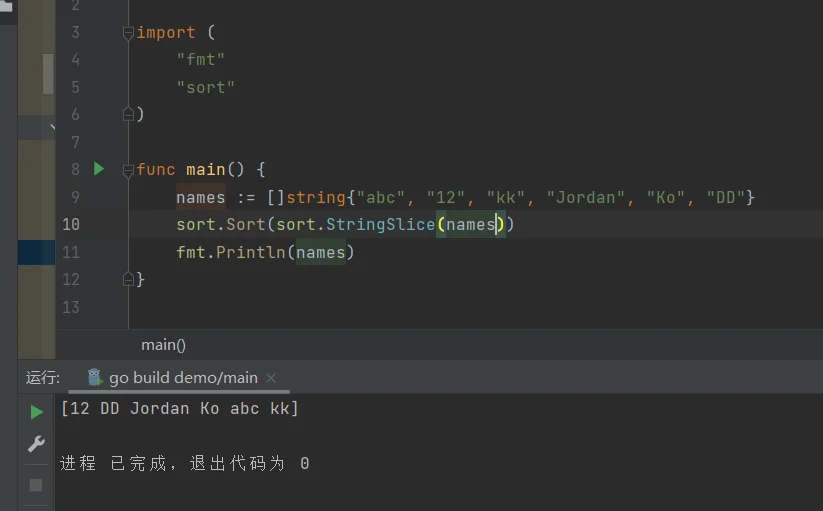
6.sort.Sort函数
必须传入Interface接口,及实现了三个方法

7.sort.Ints函数
该方法没有返回值
里面只可以传入int 的切片

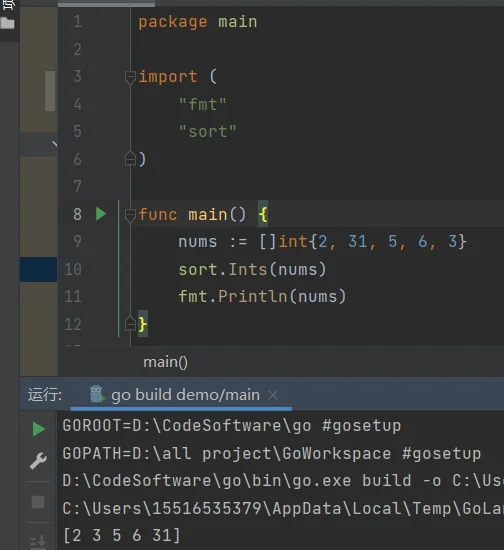
8.sort.Float64s函数
该方法没有返回值
里面只可以传入float64 的切片

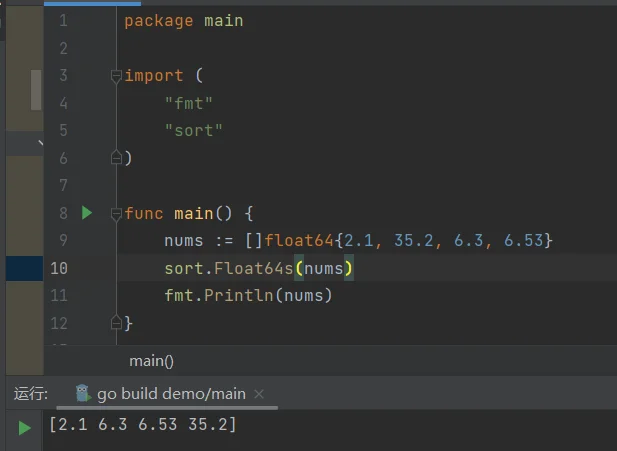
9.sort.Strings函数
该方法没有返回值
里面只可以传入string 的切片

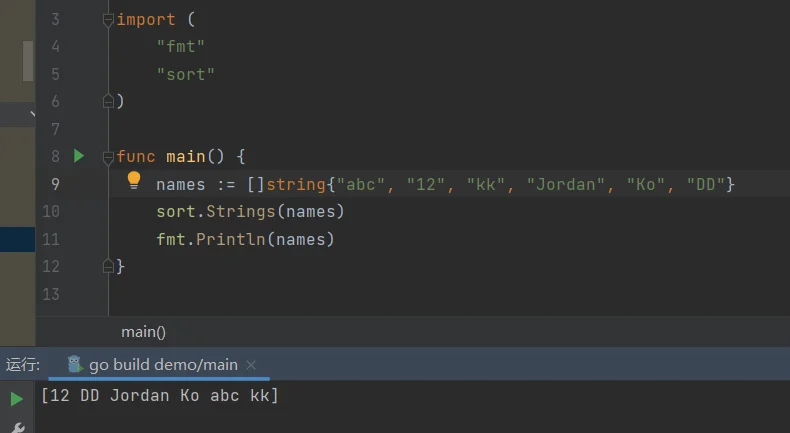
10.sort.IsSorted函数
func IsSorted(data Interface) bool {… }
只用来判断是否有序,并不执行排序操作
11.sort.Reverse函数


12.sort.Slice函数
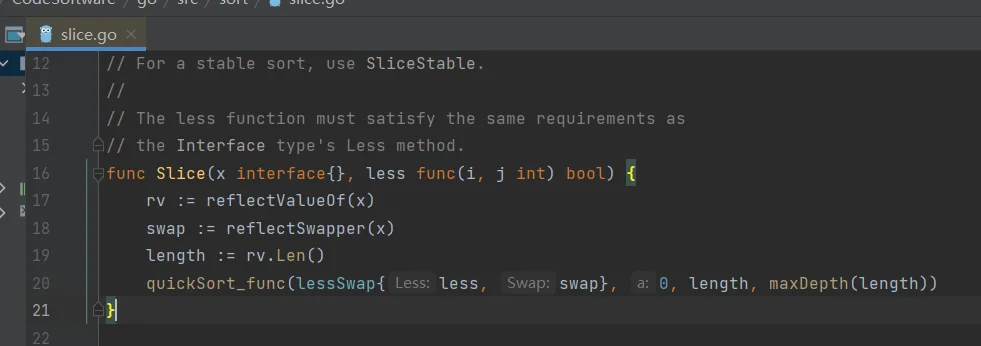
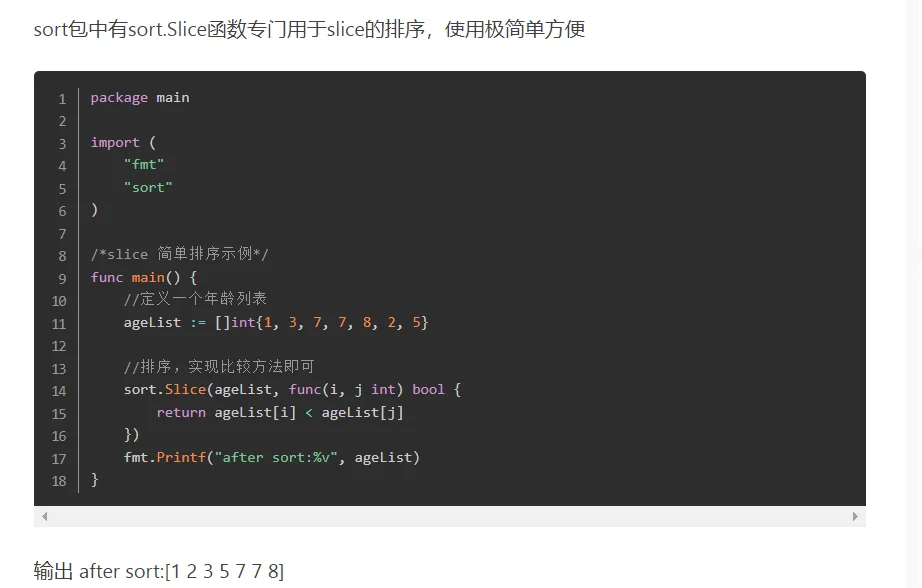
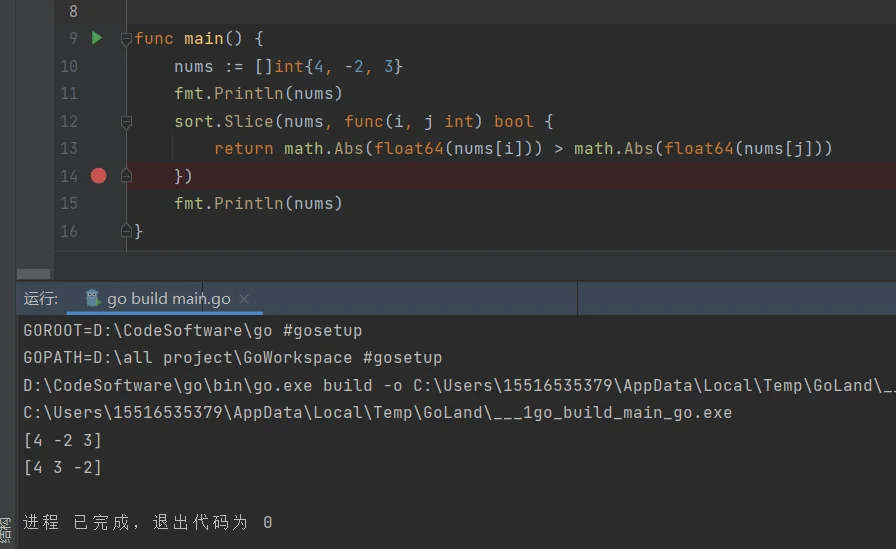
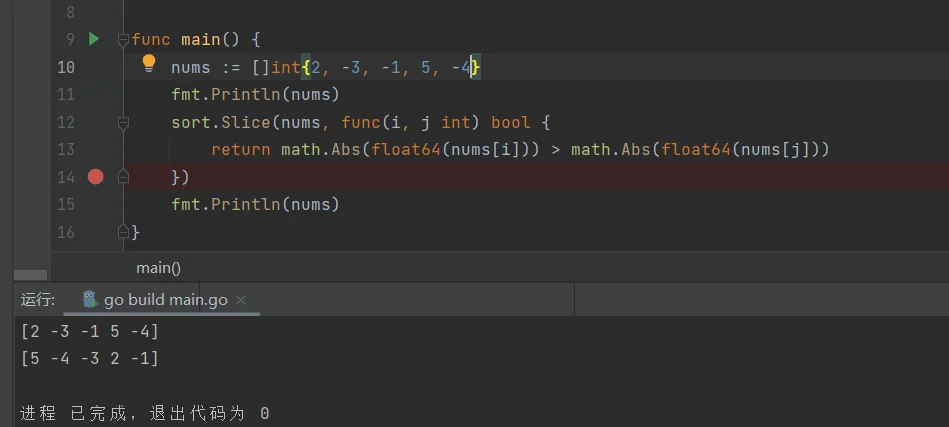
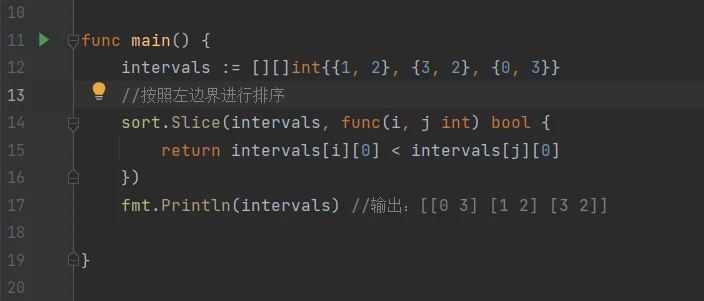
13.IntsAreSorted函数
IntsAreSorted检查a是否已排序为递增顺序。
func IntsAreSorted(a []int) bool
14.SearchInts
SearchInts在递增顺序的a中搜索x,返回x的索引。如果查找不到,返回值是x应该插入a的位置(以保证a的递增顺序),返回值可以是len(a)。
func SearchInts(a []int, x int) int
15.Float64sAreSorted函数
Float64sAreSorted检查a是否已排序为递增顺序。
func Float64sAreSorted(a []float64) bool
16.SearchFloat64s函数
SearchFloat64s在递增顺序的a中搜索x,返回x的索引。如果查找不到,返回值是x应该插入a的位置(以保证a的递增顺序),返回值可以是len(a)。
func SearchFloat64s(a []float64, x float64) int
17.StringsAreSorted
StringsAreSorted检查a是否已排序为递增顺序。
func StringsAreSorted(a []string) bool
18.SearchStrings
SearchStrings在递增顺序的a中搜索x,返回x的索引。如果查找不到,返回值是x应该插入a的位置(以保证a的递增顺序),返回值可以是len(a)。
func SearchStrings(a []string, x string) int
19.Stable函数
Stable排序data,并保证排序的稳定性,相等元素的相对次序不变。
它调用1次data.Len,O(nlog(n))次data.Less和O(nlog(n)*log(n))次data.Swap。
func Stable(data Interface)
